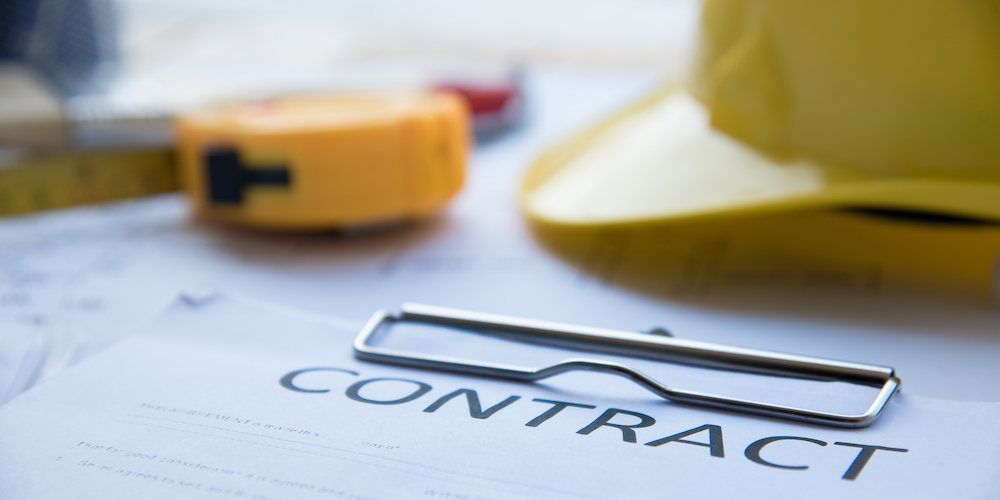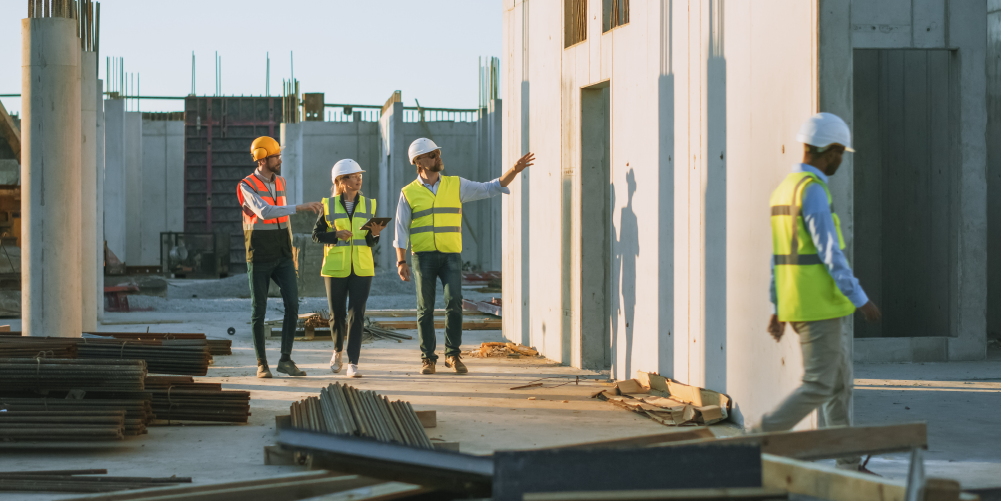— 5 min read
How to Write a Notice of Delay for a Construction Project: A Contractor’s Guide
Last Updated Aug 23, 2023

Before making a claim to recover added costs or schedule time, contractors need to notify their customers that a delay has occurred. In most cases, a notice of delay is required in order to make a claim to extend the completion date or recover costs.
Let’s take a brief look at the types of delays on a construction project, review some delay notice contract clauses, and what to include in a notice of delay.
Contents
Table of contents
Types of delays
Construction delays are categorized by three characteristics:
- Was it critical?
- Could it have been avoided?
- Should the contractor be paid for it?
Critical delays affect the project completion date or some other important milestone, as they affect the critical path. They can’t be made up, so they lead to an extension of the project schedule. Noncritical delays affect the completion of specific activities, but don’t delay the overall completion of the project.
Excusable delays are out of the contractor’s control, like the weather. Most of the time these are listed in the contract as reasons for the project scheduled to be extended. Inexcusable delays are caused by the contractor’s actions, and don’t usually lead to a claim for added costs or a schedule extension.
Finally, if the party affected should be given an extension or compensation for the delay, it’s called a compensable delay. All excusable delays are compensable since they are out of the contractor’s control. Inexcusable delays are generally non-compensable.
Delay notice contract clauses
In order to know whether the contractor needs to send a notice, and when the deadline for sending a notice is, check the contract. Most contracts have clauses dealing with delays or notices of claims that spell out the requirements for submitting them. Because it can be hard to know how much of an effect a delay may have on the project, it’s a good practice to send a delay notice any time one occurs.
For example, let’s look at the Notice of Claims clause in the AIA A201, General Conditions:
"15.1.3.1 Claims by either the Owner or Contractor, where the condition giving rise to the Claim is first discovered prior to expiration of the period for correction of the Work set forth in section 12.2.2, shall be initiated by notice to the other party and to the Initial Decision Maker with a copy sent to the Architect, if the Architect is not serving as the Initial Decision Maker. Claims by either party under this section 15.1.3.1 shall be initiated within 21 days after occurrence of the event giving rise to such Claim or within 21 days after the claimant first recognizes the condition giving rise to the Claim, whichever is later."
Later clauses state that in order to make a claim for additional costs or additional time, the contractor must provide the notice according to section 15.1.3.1 above.
Here’s a similar clause with a much shorter deadline:
"Immediately, and in no event no later than ten (10) days after first believes an event may give rise to or result in a Change due to any delay under this Agreement, the Private Entity shall notify the Owner’s Representative in writing of them. The notification must identify the difficulties, the reasons for them, and the estimated period of delay anticipated. Failure to give such notice in strict compliance with this Section 10.3 will waive any right by Private Entity to make a claim based upon such delay. Such notice shall be a condition precedent to Private Entity's right to pursue any claim for an adjustment to payment or schedule based upon such delay."
What to include in a notice of delay in construction
It’s important to clarify that a notice of delay is not a claim, however, it provides initial notification of grounds for a potential claim. Some contracts stipulate that the contractor cannot be compensated for delays unless a notice of delay was sent, so it pays to get in the habit of sending one any time there’s a delay.
Unless the contract states differently, a notice of delay can be sent via email or written correspondence, and should be sent to the party you are in contract with.
There are three things that should be included in the notice of delay.
1. Details of the delay
Include a short narrative describing what happened and how it caused a delay to the project, as well as an estimate of the amount of time the project will be delayed, if known.
2. Potential costs or results of the delay
If there’s a chance that the delay will add additional costs or require a schedule extension, provide as much information as possible about the effects. Costs should include labor, material, equipment, and overhead. If a schedule extension will be needed, give an approximate timeline.
3. Proof or evidence to substantiate the claim
You need to provide backup documentation to substantiate the cause and potential effects of the delay. This may include photos of any damage, weather reports, correspondence with vendors or contractors, copies of invoices, or other documents.
Send notices anytime there’s a delay
Since notices of delay in construction are often required by contract, it’s important that contractors review these sections and understand the deadlines and requirements for sending such notices. Even if you don’t have all the information regarding the delay and its possible effects, it pays to be proactive and notify the project team.
If you have questions regarding a contract, a particular clause, or are in a situation caused by a delay, it pays to consult a construction attorney. They can provide you with the guidance you need and let you know your alternatives.
Categories:
Tags:
Written by
Dawn Killough
33 articles
Dawn Killough is a writer with over 20 years of experience in construction, having worked as a staff accountant, green building advisor, project assistant, and contract administrator. She shares fundamental green building strategies and techniques in her book, Green Building Design 101. Dawn lives in Portland, Oregon.
View profileReviewed by
Matt Viator
Matt Viator, Counsel for Procore Technologies, a Louisiana native who's settled in New Orleans after a brief stop in Baton Rouge. Matt joined the Levelset (a Procore Company) team as a 2016 and is a licensed Louisiana attorney with a J.D. from Tulane University Law School. Matt has extensive construction law knowledge surrounding contracts, payments, and more.
View profileWin More Work
Get discovered for relevant work on the Procore Construction Network.

Explore more helpful resources

Contract Precedence: A Clause to Clear Construction Confusion
Construction contracts are usually lengthy and complicated, composed of a wide range of documents In a perfect world, the contract provides the clarity and direction all stakeholders need to move...

Construction Contract Administration: Roles & Responsibilities
Construction contracts, especially for large projects, can be extremely detailed with many key documents often compiling thousands of pages. Because of this, larger firms have a dedicated role to keep...

Construction Contract Documents: 9 Key Components
Every construction project — whether a small-scale residential renovation or an extensive municipal development — requires a contract. Construction contracts are multifaceted, often comprising numerous documents that cumulatively define the...

Job Order Contracting (JOC) Explained
Contracts for commercial construction projects usually cover a complete scope of work, but large institutions often have ongoing needs for smaller projects. This is where job order contracting (JOC) comes...
